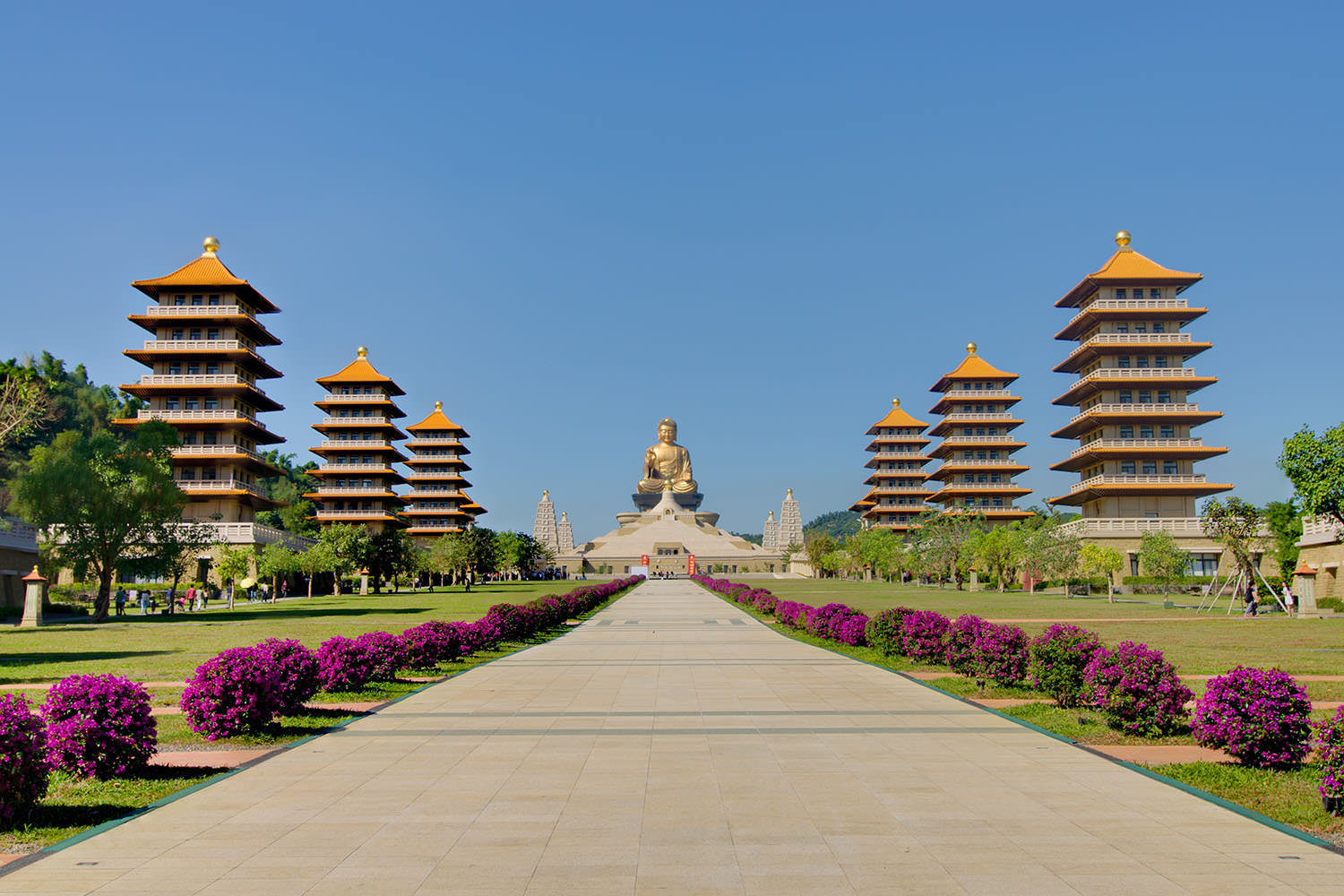
Kaohsiung
- Home
- Kaohsiung
Top 10 Must-Visit Kaohsiung Attractions|Bucket List Guide
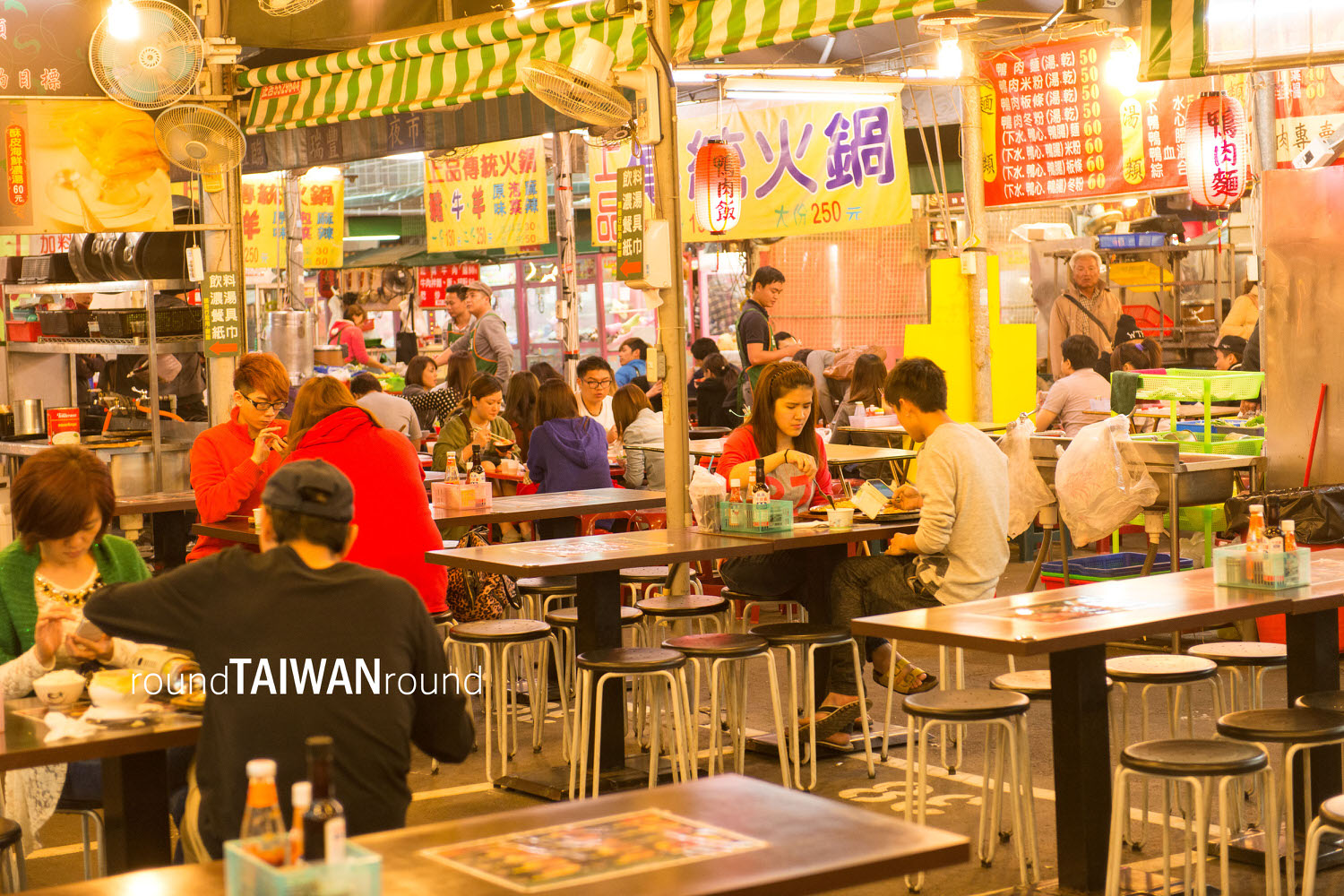 1
1Ruifeng Night Market
Only a ten minute drive from Zuoying High Speed Rail, Ruifeng Night Market is now the biggest and most diverse of the night markets in Kaohsiung, especially when it comes to street food. Except on Mondays and Wednesdays when the night market is closed, every day of the week sees almost one thousand stands selling everything from dolls, accessories, dog clothes, bags and fashion items, to games such as baseball, throwing rings, shooting balloons and other recreation booths. But, of course, it is the food that is the most loved of all.
The best thing about browsing a night market is the fact that you can eat while you take in the goods on offer. If you see something you like, you can stop and get in the line. For local people, the best way to enjoy the night market is to first buy a beverage and wander around the night market sipping on it. This is a brilliant solution to the hot Kaohsiung summers, when you find that you always feel thirsty. Dianxiaoer (店小二) sells a fresh milk tea (鮮奶紅茶) which makes a brilliant choice because it is made with milk produced in Kaohsiung, and coupled with deep black tea, tastes very good indeed. Then, as you continue wandering through the night market, your next stop has to be Shih Stinky Tofu (石記臭豆腐), which, although a similar product can be found all over Taiwan, is unusal for its black pepper flavor little seen in Taiwan. Its taste is not exactly spicy, but aromatic and more-ish. Continuing along the busy road, A-Ji-Shi (阿雞師) sells kebabs (串燒) with such an enticing fragrance that every passersby stops to buy a stick of grilled chicken seasoned with Korean sauce. If you don’t buy it, you will definitely regret it. Grilled clam (乾燒蛤) is a dish full of clams and basil, and is definitely a must-try, as the sweet broth is very memorable. Munich German Pork Knuckles (慕尼黑德國豬腳) are slowly baked with charcoal and then diced up by the expert chef to be sold, meaning you don’t need to struggle away with knife and fork like you would in a restaurant, but can instead wander the night market with your food in hand. But if any of these don’t tempt you, there are also luwei (braised food 滷味), salt and pepper Chicken (鹹酥雞), calamari rings (魷魚圈), oden (關東煮), candied fruit (糖葫蘆) and ice cream that you can choose among.
Many of the stalls here have more than two decades of history, and from their original placement on a chaotic roadside, they have gradually come to be somewhat ordered following the hard work of the local people in making this night market succeed. Best of all, because Ruifeng Night Market has its own dedicated space, you do not need to share the space with noisy and dangerous scooters or cars. So while it is a relatively narrow space that can easily feel crowded, at least it is a lot safer than many of Taiwan’s other night markets.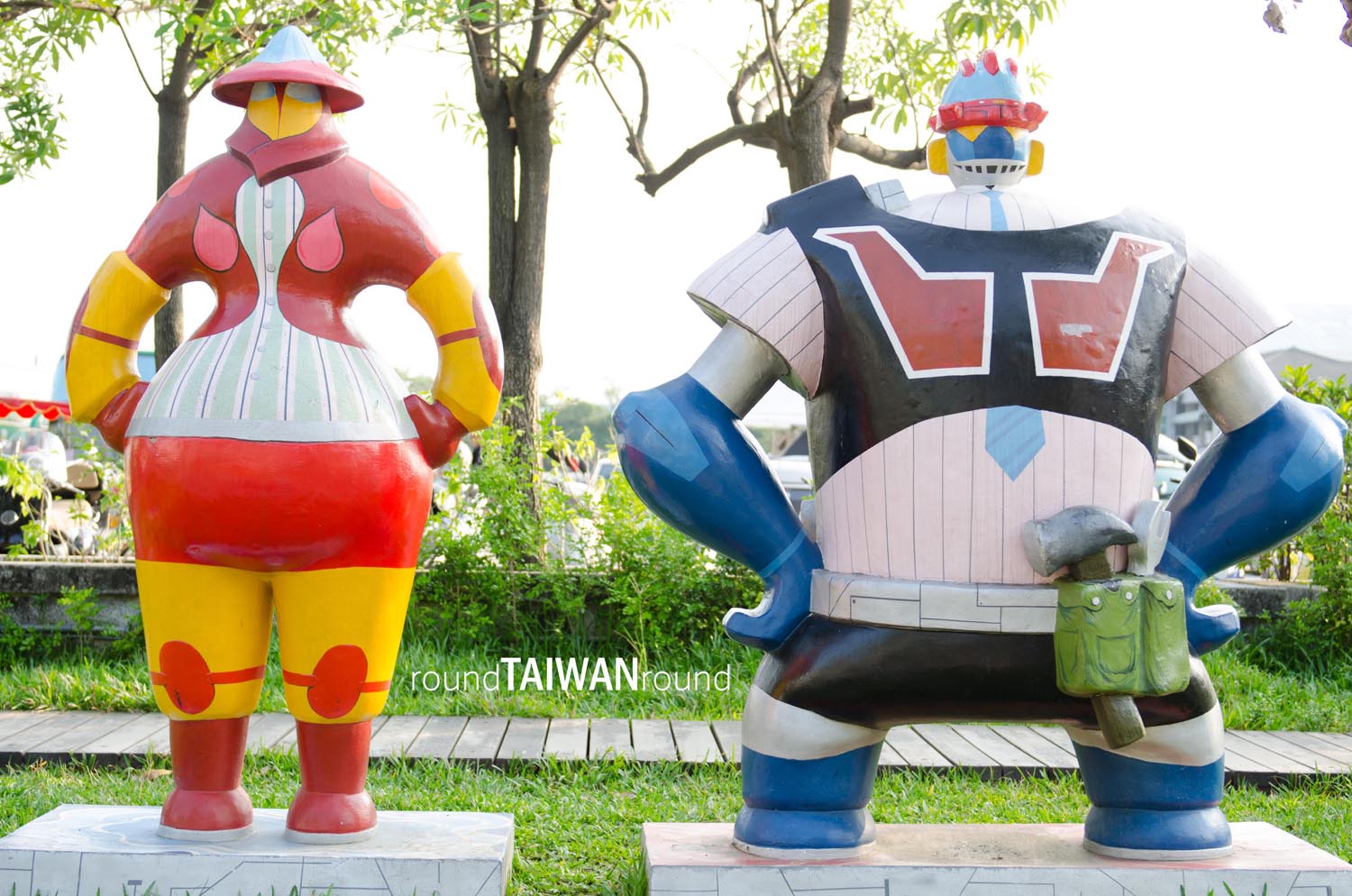 2
2Pier-2 Art Center
Pier-2 Art Center (駁二藝術特區) is located in the Yancheng District of Kaohsiung City. Through a series of planning and collaboration with artists, the center has revitalized idle warehouse spaces with creativity, making the entire area vibrant and new. In addition to occasional exhibitions, visitors can enjoy the breeze and admire the harbor scenery. Popular among tourists, Pier-2 Art Center (駁二藝術特區) is also a high-quality leisure and entertainment destination for Kaohsiung residents.
In addition to various shops, the Pier-2 Art Center (駁二藝術特區)'s Day Market on weekends or national holidays is a great place for treasure hunting and enjoying the view of the light rail running on its tracks.
Another highlight within Pier-2 is the Pier-2 Tower, approximately three stories high, offering unbeatable views of the harbor, Qijin Island, and the renowned 85 Sky Tower. Additionally, the Dayong Warehouse, known as the ""Tung Warehouse Store,"" and the Penglai Warehouse, home to Hamasen Museum of Taiwan Railway, are popular attractions for children, showcasing various railway models and the history of railways, making it an educational and entertaining place to visit.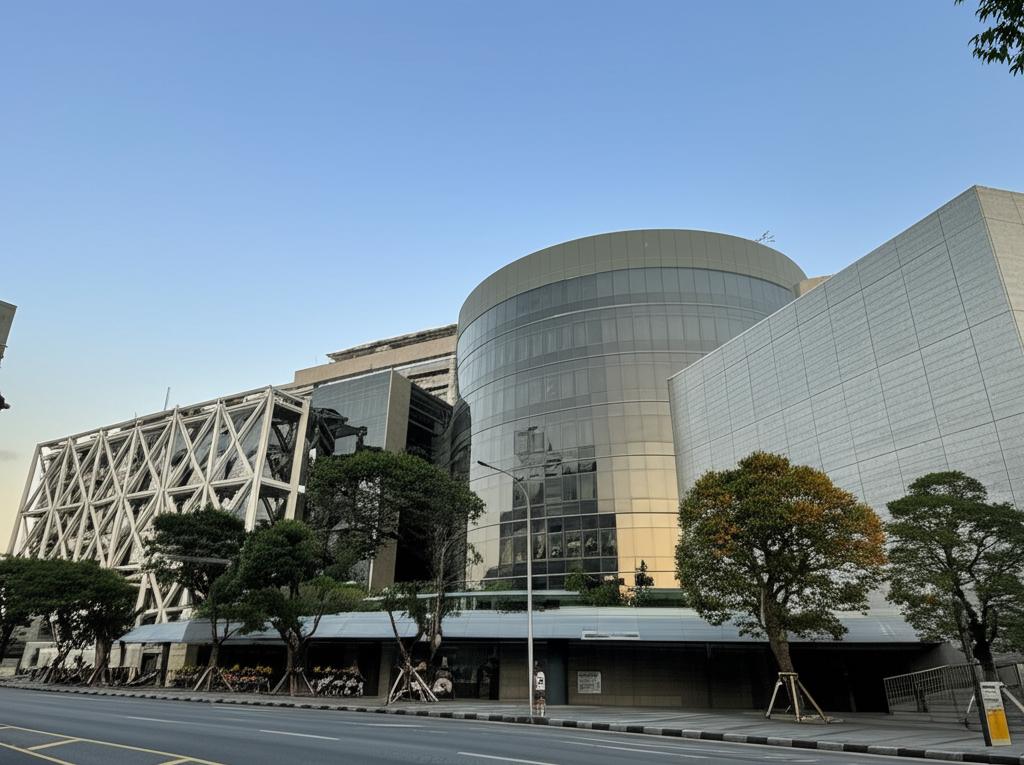 3
3National Science and Technology Museum
At the National Science and Technology Museum, many special exhibitions have attracted widespread attention. Among them, the "Heaven of Hot Snow" exhibition on B1 provides children with interactive experiences related to snow, allowing kids who grew up in a subtropical climate to personally feel the joy of skiing. Additionally, the "Fun City Exhibition Hall" combines traffic safety with science education, designed as a shopping area and children's traffic park, enabling visitors to learn life skills through play. On the 6th floor, the "Star Moments • Measurement Legends Exhibition" cleverly integrates Greek mythology with measurement science using multimedia technology, deepening visitors' understanding of science through interaction.
The National Science and Technology Museum, abbreviated as "NSTM," is located at 720 Jiuru 1st Rd, Sanmin District, Kaohsiung City. It is a historical and innovative applied science museum in Taiwan. As the first national social education institution in southern Taiwan, the museum has been devoted to promoting applied science knowledge since its opening in 1997, covering significant fields such as industrial technology, transportation, and information science.
The internal facilities of the museum are quite diverse, divided into multiple areas, including the North Hall, South Hall, and the Base Park, all aimed at providing visitors with comprehensive services. The museum emphasizes accessibility, featuring barrier-free restrooms and pathways, ensuring that visitors of all types can enjoy the exhibitions without obstacles. Furthermore, the maker activities and rich selection of popular science literature organized by the museum's science education center further spark public interest in science.
The history of the National Science and Technology Museum dates back to 1979 when it was included in one of the twelve construction projects by the Executive Yuan. In 1986, the museum's preparatory office was officially established and opened ten permanent exhibition halls in November 1997. Over time, the museum gradually expanded to eighteen permanent exhibition halls, with the "Lively Energy-Saving House" in the South Hall in 2009 showcasing the concepts of sustainable development.
In terms of transportation, the accessibility of the National Science and Technology Museum is excellent, as it can be easily reached via public transport from Kaohsiung International Airport or Zuoying High-Speed Rail Station. Additionally, convenient direct bus services are available, making it easy for the public to visit this hall of knowledge and fun.
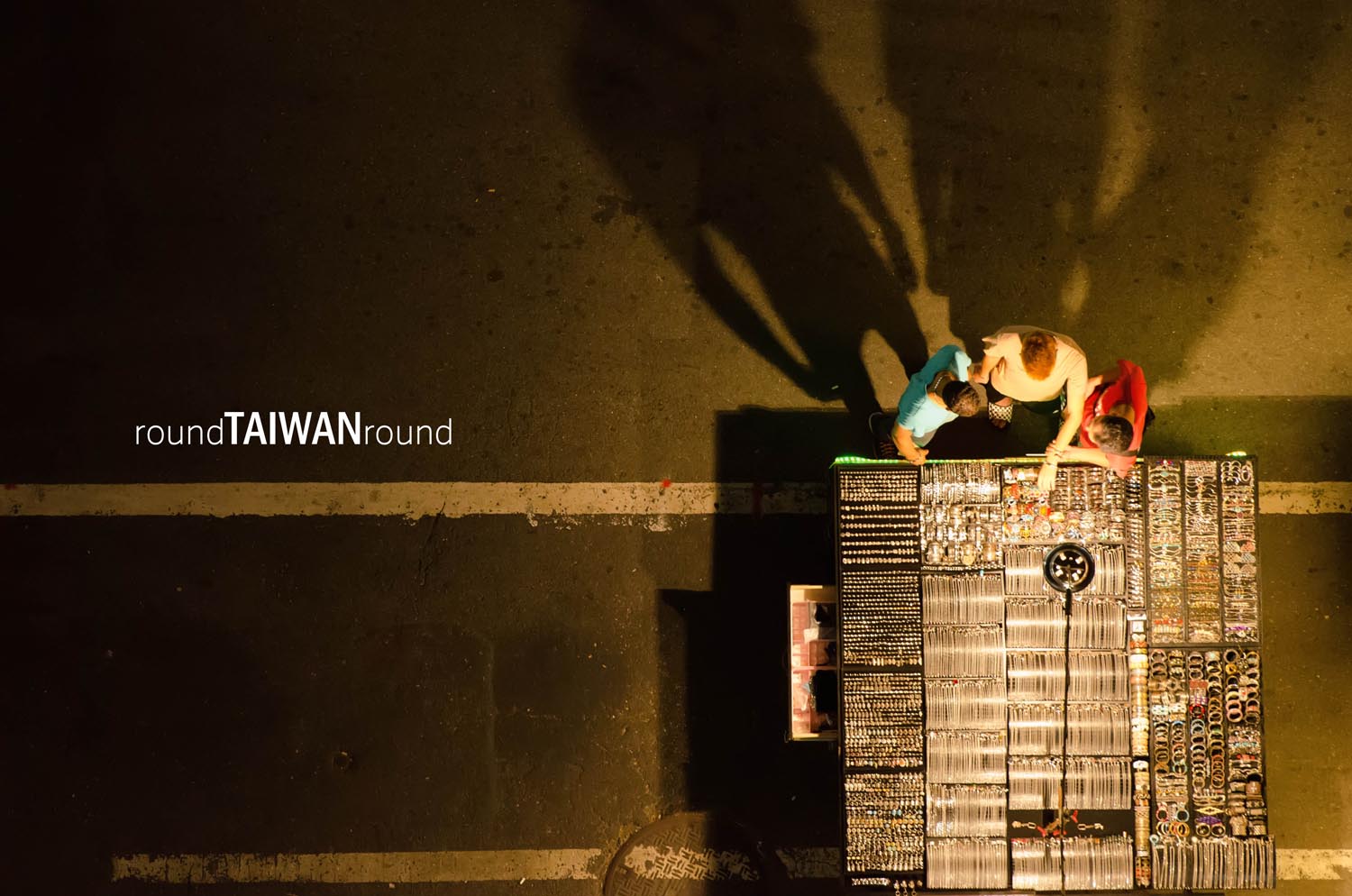 4
4Liuhe Tourist Night Market
An open-air night market rising in the 1950s, Liuohe Tourist Night Market is the first pedestrian-only night market in southern Taiwan. Thanks to the convenient location, the night market is only a 10-minute walk to the train station. Along with Kaohsiung people's enthusiasm, the only three hundred meters long street has more than one hundred stalls on it, making it the most famous night market in southern Taiwan. In the past, many tourists from northern Taiwan and Japan were sure to visit here. However, as the number of tourists increase, plus the market's popularity among Chinese tourists, the quality of services provided here has declined. Dozens of affordable steakhouses still hang an impressive array of signboards, yet tourists no longer pack out the restaurants. Instead, the emerging Ruifeng Night Market and the traditional Ziqiang Night Market are now attracting more locals.
 5
5Fo Guang Shan
Fo Guang Shan (佛光山), as the largest Buddhist architectural complex and the largest Buddhist monastery in Taiwan, has been honored with the ""National Golden Award for Architecture"". It is considered the most representative architectural structure for foreigners who want to explore different religious and cultural experiences in Taiwan. Even for those who do not visit for religious reasons, the restaurants, art galleries, international museums, and the grandeur of the architecture, along with the spacious grounds, make it a perfect place to spend half a day or a full day, walking around and relaxing.
There are many unique features within the complex, with the most notable being the 480 small golden Buddha statues surrounding the Great Buddha Land, creating a solemn and magnificent sight. Additionally, the mission of the Fo Guang Shan Buddha Museum includes the preservation of ancient and contemporary artifacts from various countries, with a collection of thousands of precious items. Exploring the center promises to be a fulfilling experience. The main attraction, the ""Path to Buddhahood,"" is adorned with eight golden pagodas, each of which is open for visitors. The space is designed with a focus on people, and visitors need not worry about the depth and breadth of religion and culture, as each area within the center is connected with digital services such as audio guides and AR tours, making the visit both educational and enjoyable. Even children will not be bored, as there are attractions such as the dinosaur area and the San Hao Children's Museum.
One might assume that the religious site is always solemn and serious, but during the Lunar New Year and Lantern Festival, Fo Guang Shan (佛光山) becomes the liveliest, with lantern displays and cultural performances creating a festive atmosphere. For several years, the celebrations have included aerial performances using 500 drones, along with splendid fireworks and beautiful lanterns, celebrating these significant Chinese festivals.
If visitors are unsure of where to start exploring the vast grounds, Fo Guang Shan (佛光山) has thoughtfully planned different themed itineraries:
- Religious Journey: Admire world-class collections such as the precious the ""buddha's tooth relic"", the world's largest copper-cast Fo Guang Big Buddha in Asia, a replica of the underground palace of the Famen Temple in Shaanxi, a golden Buddha presented by the king of Thailand, a white jade reclining Buddha from Myanmar, a golden robe from South Korea, and the Thousand-Armed, Thousand-Eyed Guanyin.
- Romantic Journey: The ""Five Harmonies Pagoda"" as a place of celebration, and the Zhusu Forest's Qiyuan as a wedding photography location.
- Treasure Hunt Journey: The world's only three Buddha's relics, and the precious ancient painted ceilings.
- Family Journey: Tea meditation experience at the Twin Pavilion Tea House, Little Tea Master, and the Two Assemblies Pagoda|Children's Gallery.
- Art Journey: The fusion of ancient Indian, Central Indian, and architectural aesthetics of Buddhist statues and pagodas from the Tang, Song, Yuan, Ming, and Qing dynasties.
- Culinary Journey: Explore the ""Drip Water House"" restaurant brand at Fo Guang Shan (佛光山), known for its specialty vegetarian cuisine.
- Ecological Journey: The original ecology preserved during the construction of the center, home to many precious species such as the purple crow butterfly, the mallard duck, and the white goose.
Throughout the year, with various themed itineraries and different types of travel companions, Fo Guang Shan (佛光山) promises to offer unique memories and experiences for all visitors.
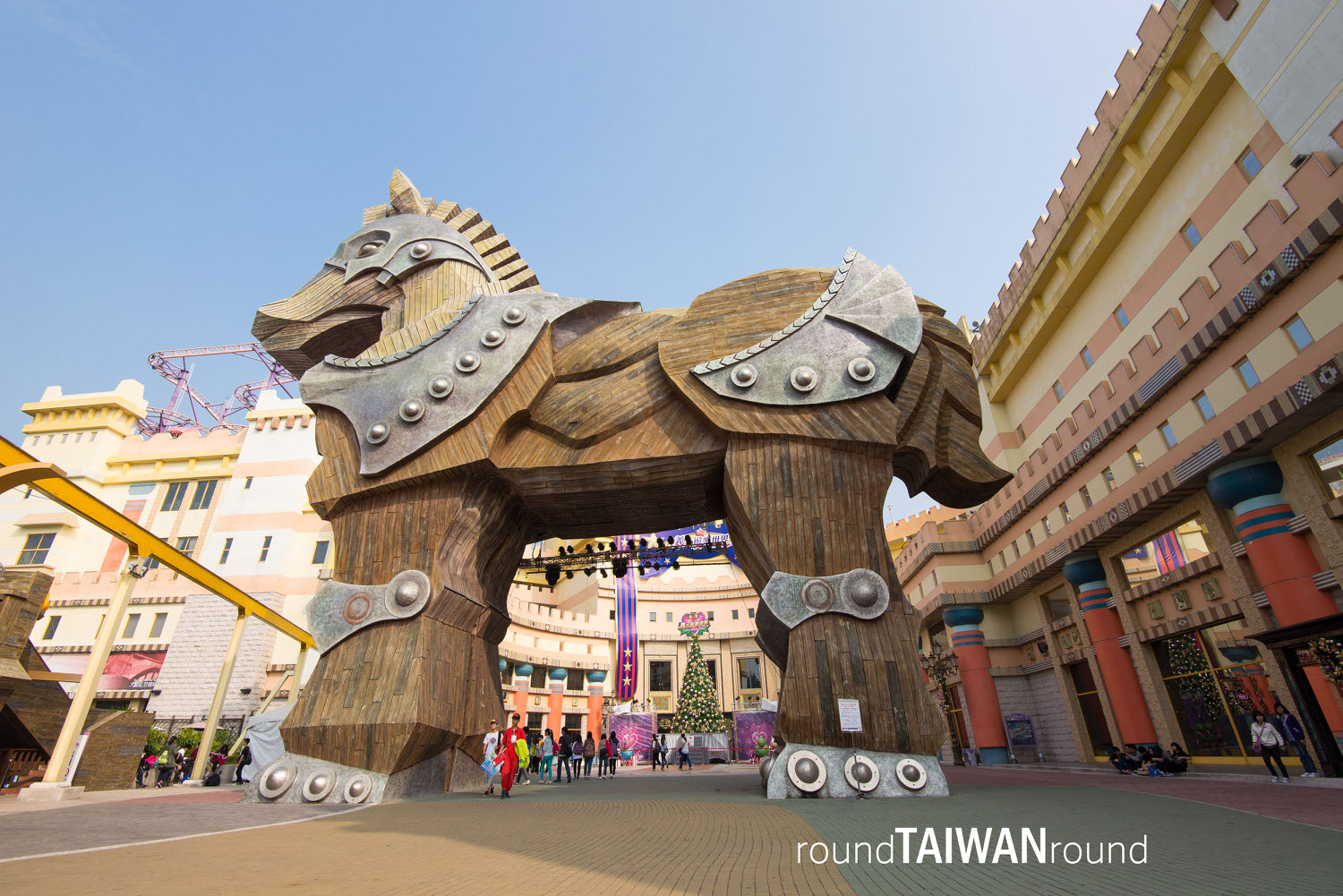 6
6Eda World
Eda World (義大世界) is the largest theme park in southern Taiwan! With a Greek-themed setting, the park features over 50 amusement rides and attractions, as well as a large outlet mall. It boasts the tallest Ferris wheel in Taiwan, the first themed sports arena in the south, a massive ice palace for ice skating, a batting cage, a 3-on-3 basketball court, and the largest 3D digital cinema in southern Taiwan. It's perfect for families and groups of friends looking to have a fun-filled day.
The theme park is designed based on ancient Greek temples. The Eda Royal Theater, a large professional theater with over 1800 seats, offers a spectacular musical performance for park visitors during the day, while at night, it hosts ticketed international performances.
Eda World (義大世界) also features the largest indoor playground for families, covering 15,000 square meters. The design of the Eda World (義大世界) Outlet is in the European style, with long corridors and a Roman-style dome, and the ceiling resembles the sky design of the Venetian Hotel in Macau.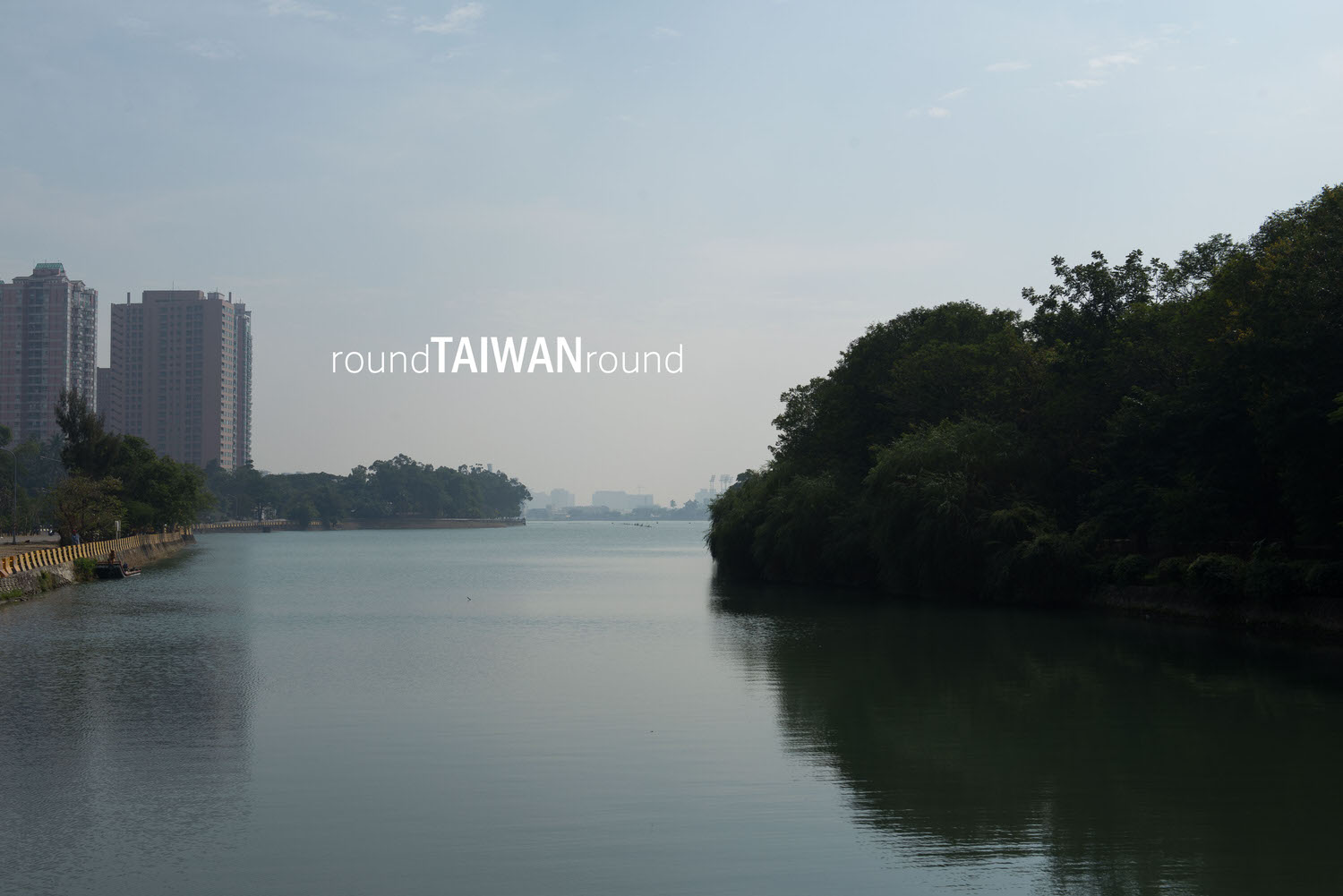 7
7Chengcing Lake
Comparing to Lotus Pond, Chengcing Lake is less popular among sightseers. This place is more like an ordinary residence. In morning, you can see local residents playing chess, fishing and practicing taiji here at pavilion on riverside. Along the riverbank, there are few distinctive restaurants could be found here. The most famous one is De Yue Lou (得月樓). Its Chinese architectural structure and provision of the lake view makes it a perfect spot to enjoy the sunset and the breeze. Sadly, at the moment we visited, this restaurant was closed long ago and chance of reopening is slim.
The Grand Hotel in Taipei is world-famous and is selected to receive all previous Taiwan presidents and essential foreign guests. However, it is not the only branch of the hotel in Taiwan. There is another one built at Chengcing Lake, Kaohsiung in Southern Taiwan. The lake view of this one may be more appealing, but its condition and facilities are relatively outdated in modern era.
Same as majority of beautiful places within Taiwan, it is not an exception that it has a guesthouse of Chiang Kai-shek (蔣公行館) at Chengcing Lake in Kaohsiung. Since Chiang’s family gradually cut off its political background, these guesthouses, which were once built for Chiang Kai-shek’s on-trip accommodation, have been either remodeled to hotels or preserved as heritages; this one in Chengcing Lake is modified into an aquarium and garden.
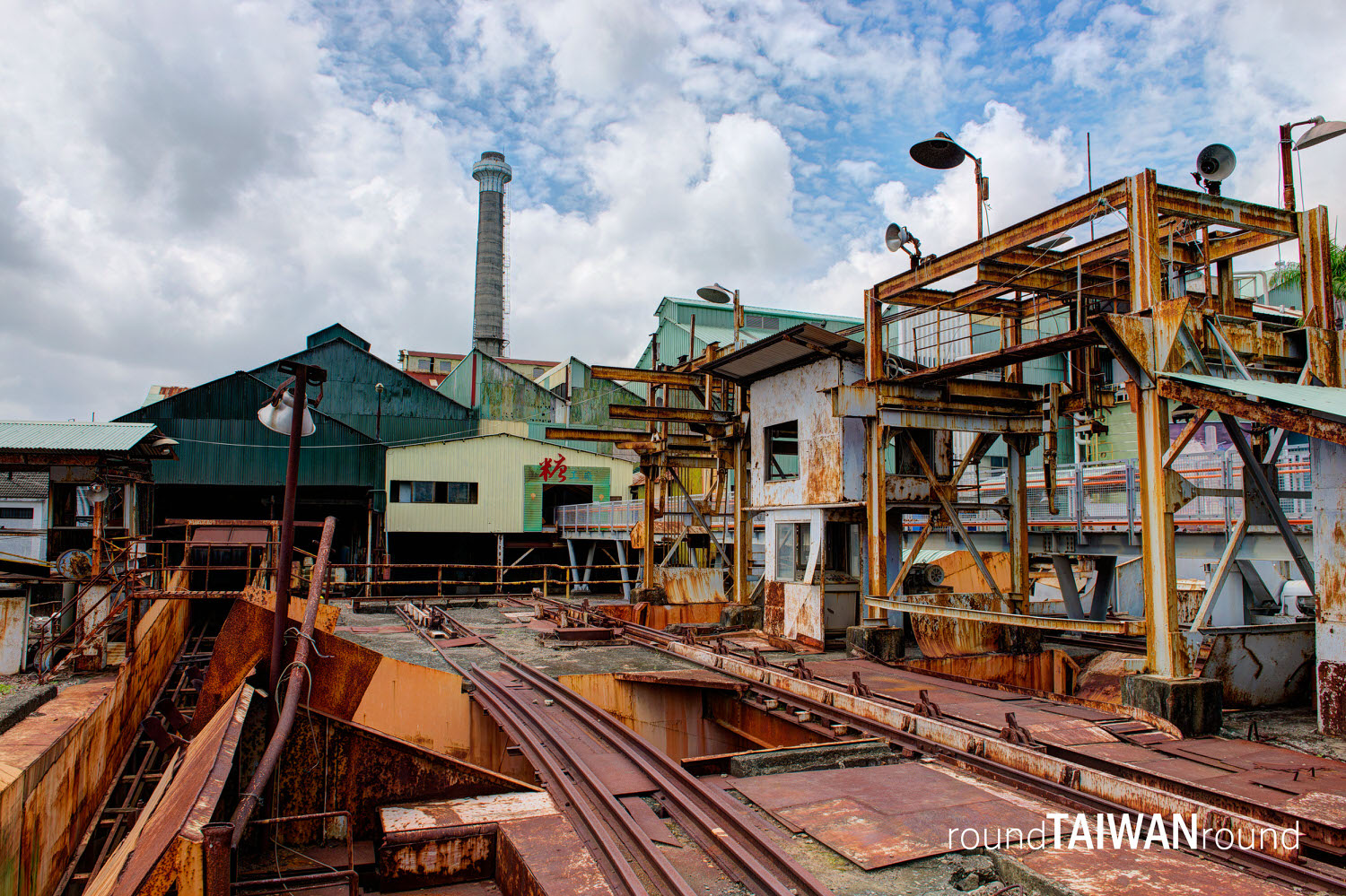 8
8Taiwan Sugar Museum
Qiaotou Sugar Factory (橋頭糖廠) is the first modern mechanical sugar factory in Taiwan, which operated from 1902 to 1999. With a history of almost a hundred years, the factory reflects Kaohsiung's transformation from an agricultural exporter to a center of heavy industry. Although the factory no longer operates, part of it has been transformed into Qiaotou Sugar Factory (橋頭糖廠), while the rest has become an area for art creation and recreation, selling popular ice products from the Taiwan Sugar Corporation.
br> In the art creation area, you'll find an old-fashioned dormitory that once belonged to the sugar factory. This building now houses several restaurants and shops selling childhood toys, coffee, pork buns, and kiln-roasted pizzas. Additionally, you'll discover paintings and sculptures created by artists. Between the Japanese-style houses, large trees provide shade, and on the grassy meadow, you'll find entrances to many bomb shelters. During the colonial era, these shelters were dug to prepare for war as sugar factories were prime targets for bombing attacks due to the essential nature of sugar as a daily necessity.
br> In the center of the park, you'll notice an unusual black statue of Guanyin. It's said that when the plant was built, tombs were discovered underground, so the business owner brought the god statue from Japan to suppress the gloomy feeling. Visitors now write their expectations and aspirations for the future on wooden tablets hanging beside the statue.
br> At the other end of the park stands Qiaotou Sugar Factory (橋頭糖廠). At the entrance, you can see a number of old trains that were used to carry sugar cane to the factory. Inside the factory, you'll see all kinds of large machines, from cutting and pressing to heating, cleaning, precipitating, and distilling, showcasing the unused yet authentic processing procedures.
br> Leaving the factory, you'll find yourself in the Kaohsiung branch of Ten Drum Cultural Creative Group, where percussion performances take place occasionally. This branch is larger than the Rende park in Tainan, so it's recommended to rent a bicycle at the KRT station for an easy trip in the park. On holidays, you can also take the little train run by Taiwan Sugar Corporation, known as ""wufenzi che"" (half-size train cars), a favorite for both children and adults.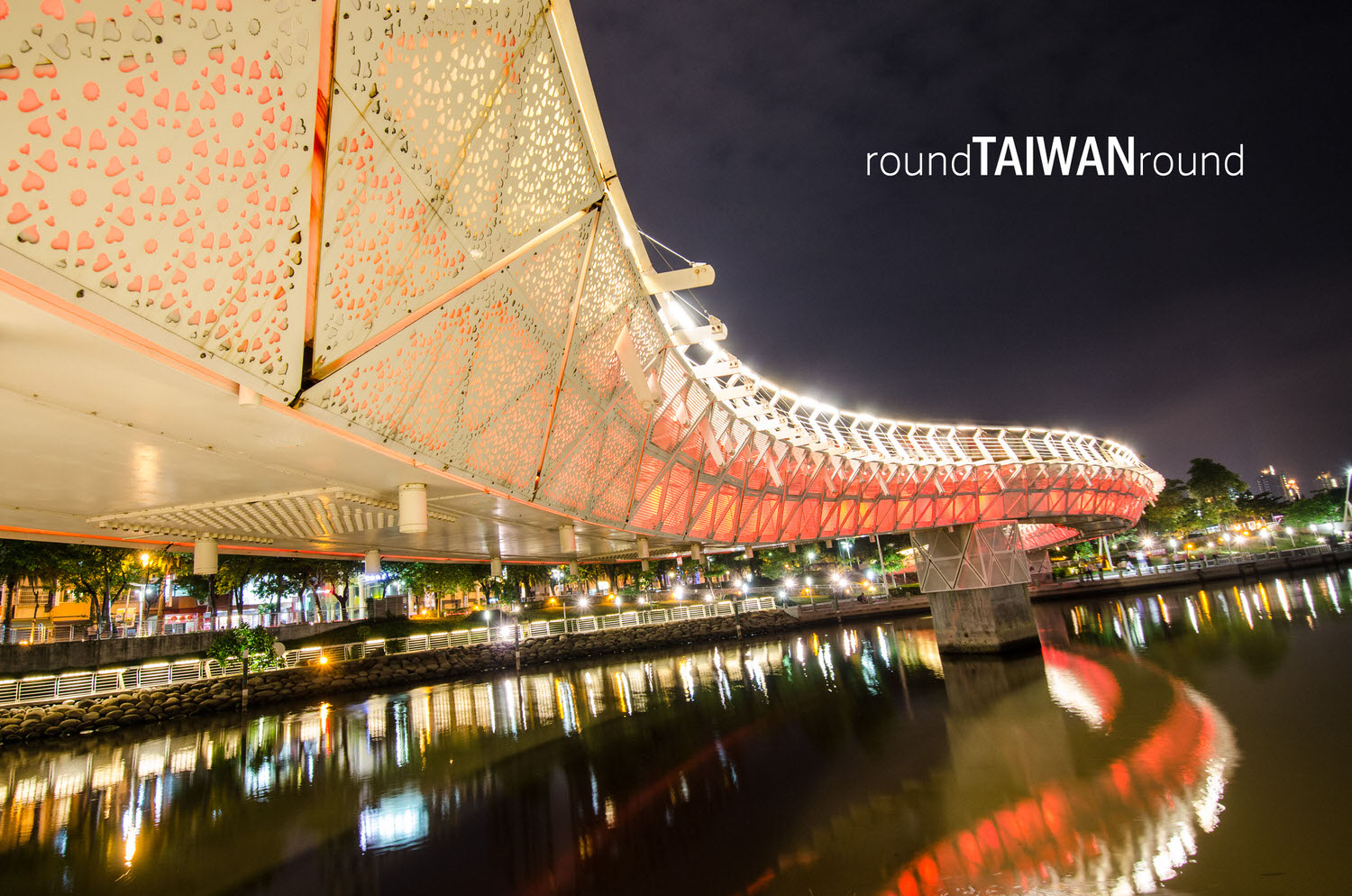 9
9Love River
In almost every great city, there lies a poetic river. For example, the Seine in Paris nurtures poets at the Left Bank, while the River Thames in London serves as the setting of many literary works. Although the traditional housing along the river has been replaced by modern concrete buildings, and both sides of the river are connected by a cold steel bridge, people still love to walk or relax on the river bank. The sun's afterglow reflected on the river brings urban people a feeling of warmth and peace. It's a feeling that cannot be replaced, no matter how many material comforts people have.
In Taipei, most rivers are covered with asphalt to make them roads, creating a little bit more space in the narrow urban area. Therefore, people feel really crowded when living in Taipei. However, in Kaohsiung, Taiwan's second largest city, the romantic Love River (愛河) meanders through the city. With a total length of only 12 kilometers, the river flows through the youthful and vibrant Pier-2 Art Center, the family-friendly Xinguang Ferry Wharf, Taiwan's second tallest skyscraper, 85 Sky Tower, the diverse and delectable Yancheng District, the lovers' rendezvous known as the Heart of Love, the Tower of Light favored by photographers, and the elegantly adorned Holy Rosary Cathedral. Additionally, there are unique cafes and sizzling stir-fry eateries on both sides of the river. Much like other large tourist cities, Kaohsiung also offers sightseeing cruises that invite tourists to enjoy the city's night scenery from the river.
However, many people do not know that the romantic name of the river was widely accepted only after the 1950s. During the Japanese rule, the river was originally named ""Kaohsiung River."" Later, due to the establishment of the Port of Kaohsiung at the estuary, the river was also called ""Kaohsiung Canal."" When the KMT took over Taiwan, tourists began to gather around a newly-built riverside park, and boat companies started offering rowing and cruising services. One of them was named Love River (愛河) Cruise. However, during a typhoon, the signboard of the shop was blown down, leaving only the first two characters ""Love River (愛河)."" Furthermore, there was a tragic incident where a couple jumped into the river, ending their lives. Once the tragedy was reported, the name Love River (愛河) began to circulate widely, and it has since become the official name of the river. 10
10Dadong Arts Center
The Dadong Arts Center is located in the Fengshan District of Kaohsiung City and serves as a modern venue dedicated to promoting cultural and artistic activities. Since its inauguration in 2012, this arts center has become an important hub for cultural development in southern Taiwan. The architectural design features exposed concrete, cleverly integrating natural elements to showcase a unique aesthetic inspired by Eastern Zen, allowing every visitor to experience a distinct cultural atmosphere.
The interior facilities are quite comprehensive. The Dadong Arts Center houses a multi-purpose performance hall with a seating capacity of 880, making it ideal for various performances and cultural events. Additionally, the visual exhibition hall focuses on displaying a diverse range of artwork, attracting many art enthusiasts. Notably, it is home to Taiwan's first specialized art library, which boasts a collection covering up to twelve artistic fields, establishing itself as an important resource center for the arts in southern Taiwan.
The construction of the Dadong Arts Center officially began in 2008, replacing the former National Father Memorial Hall, with the aim of promoting the development of the cultural industry in the Fengshan area. The arts center is set in an elegant environment that cherishes the ever-changing play of light and shadow. Particularly at night, the visual spectacle created by the illuminated fountains is captivating, presenting vibrant artistic scenes to visitors.
The outdoor plaza is another highlight, blending nature and art, and frequently hosting music and dance performances, providing a relaxed and enjoyable space for the public. The Dadong Arts Center is not only a platform for showcasing art but also aims to promote a variety of artistic activities, allowing every participant to personally experience the charm of art and vividly embodying the unique style of cultural arts in southern Taiwan.

